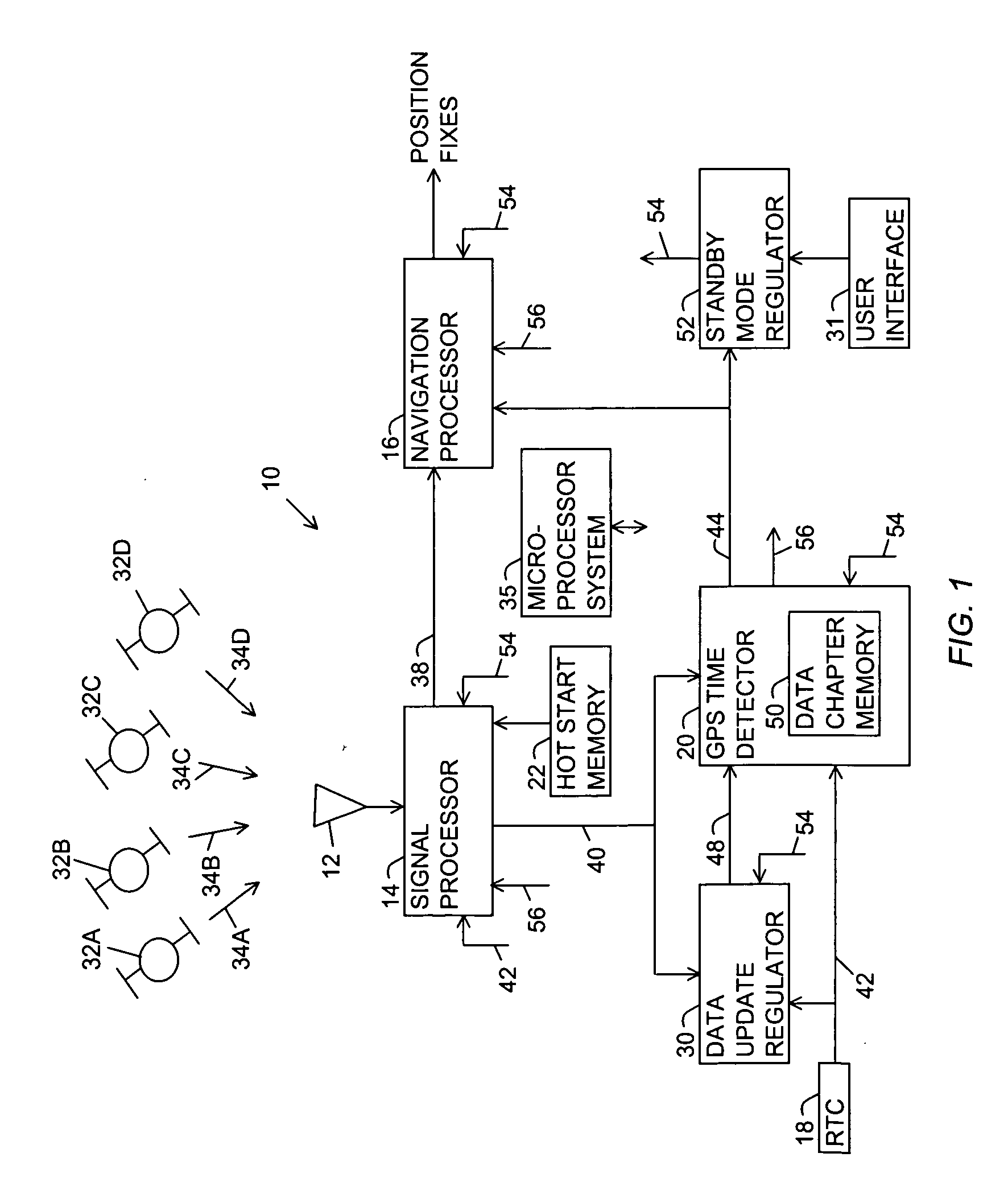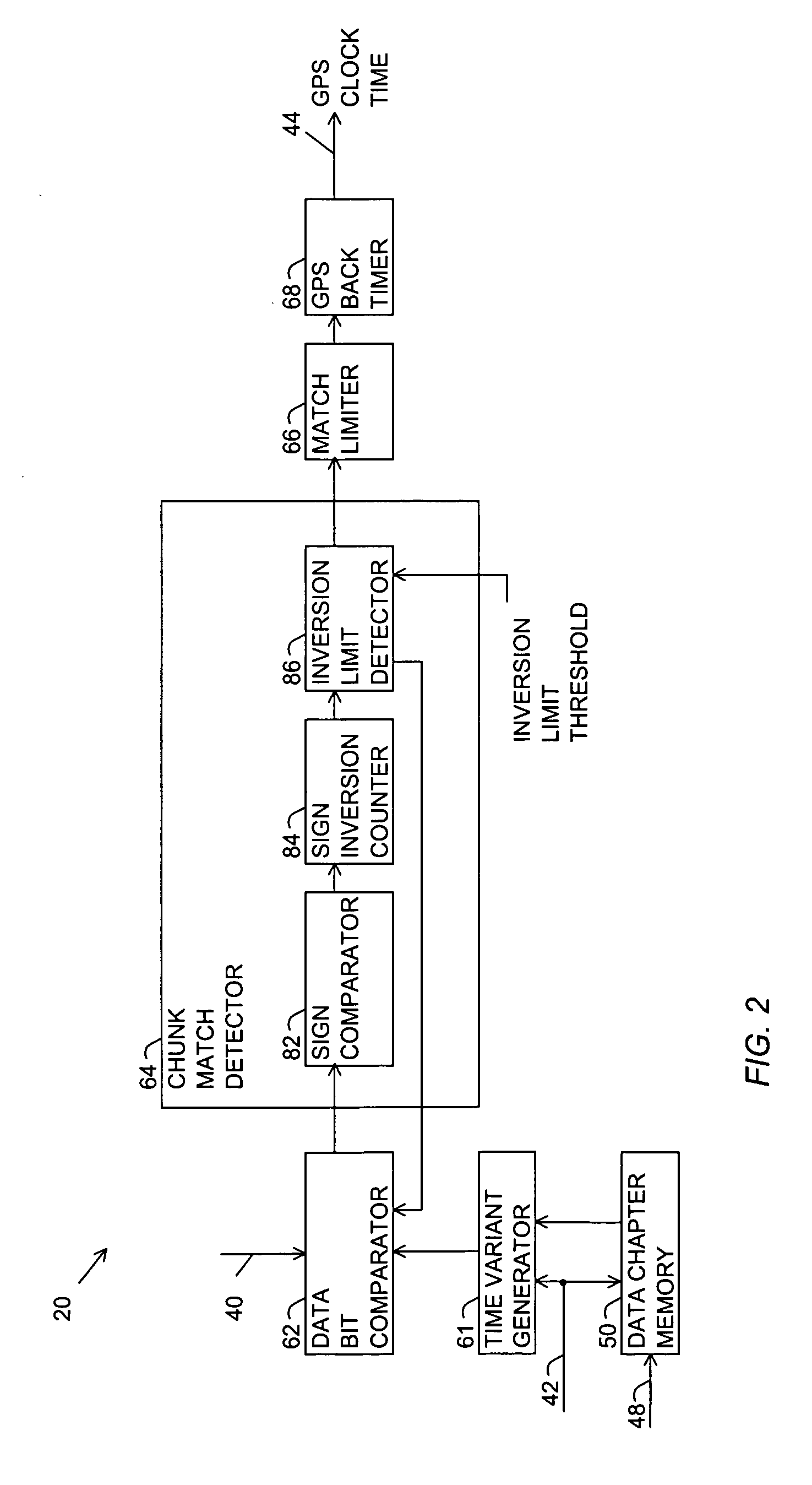GPS receiver having a prescribed time-of-entry into an operation mode
a technology of gps receiver and operation mode, which is applied in the field of gps receiver, can solve the problems of not being able to determine the position, adding hardware cost or power consumption, or both, and achieves the effect of fast time to first fix and/or low power consumption, and excessive hardware cos
- Summary
- Abstract
- Description
- Claims
- Application Information
AI Technical Summary
Benefits of technology
Problems solved by technology
Method used
Image
Examples
Embodiment Construction
[0026]FIG. 1 is a block diagram of a global positioning system (GPS) receiver of the present invention referred to with a reference number 10. The GPS receiver 10 includes a GPS antenna 12, a signal processor 14, a navigation processor 16, a real time clock (RTC) 18, a GPS time detector 20, a hot start memory 22, a data update regulator 30 and a user interface 31. GPS signal sources 32A-D broadcast respective GPS signals 34A-D. The GPS signal sources 32A-D are normally GPS satellites. However, pseudolites may also be used. For convenience the GPS signal sources 32A-D are referred to as GPS satellites 32 and the GPS signals 34A-D are referred to as GPS signals 34 with the understanding that each of the GPS signals 34A-D is broadcast separately with separate GPS message data for each of the GPS signal sources 32A-D. A global navigation satellite system (GNSS) signal source and signal may be used in place of the GPS signal sources 32 and GPS signals 34.
[0027] In order to more easily u...
PUM
 Login to View More
Login to View More Abstract
Description
Claims
Application Information
 Login to View More
Login to View More - R&D
- Intellectual Property
- Life Sciences
- Materials
- Tech Scout
- Unparalleled Data Quality
- Higher Quality Content
- 60% Fewer Hallucinations
Browse by: Latest US Patents, China's latest patents, Technical Efficacy Thesaurus, Application Domain, Technology Topic, Popular Technical Reports.
© 2025 PatSnap. All rights reserved.Legal|Privacy policy|Modern Slavery Act Transparency Statement|Sitemap|About US| Contact US: help@patsnap.com



